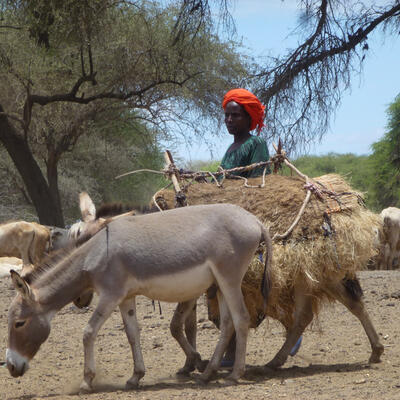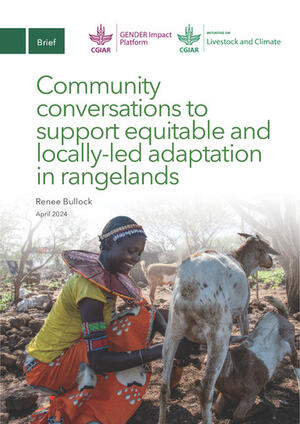
Greenhouse gas emissions from cattle enclosures in semi-arid sub-Saharan Africa: The case of a rangeland in South-Central Kenya
Abstract
Extensive livestock production in pastoral areas supports millions of livestock keepers in Sub-Saharan Africa (SSA). However, it is also linked to environmental externalities such as greenhouse gas (GHG) emissions. Corralling of livestock overnight in fenced enclosures (“bomas” in Kiswahili) is common to protect animals from theft and predation and is practiced across SSA. Boma manure is usually not removed and accumulates over years, making bomas GHG emission hotspots. The following study presents the first full year of CO2, CH4, and N2O emissions measurements from cattle bomas in a savanna ecosystem in Kenya, comparing active (in use) and inactive (i.e., abandoned) bomas. Active bomas were used for 1–3 months before being abandoned and cattle were moved to a new boma. GHG emissions were measured using static chambers inside three replicate bomas and along three 100 m transects from bomas into undisturbed savanna. Compared to savanna background fluxes, it was found that GHG flux rates from bomas were elevated by several orders of magnitude, with mean fluxes of 487 ± 8 mg CO2-C m−2 h−1, 325 ± 11 µg N2O-N m−2 h−1, and 3245 ± 234 µg CH4-C m−2 h−1 for active bomas, and 167 ± 52 mg CO2-C m−2 h−1, 610 ± 186 µg N2O-N m−2 h−1, and 3127 ± 1262 µg CH4-C m−2 h−1 for inactive bomas, while surrounding savanna soils only emitted 22.3 ± 18.2 mg CO2-C m−2 h−1, 2.5 ± 2.2 µg N2O-N m−2 h−1, and 0.1 ± 0.7 µg CH4-C m−2 h−1. Assuming that bomas are used for 45 days per year, annual manure emission factors were 2.43 ± 0.42%N for N2O and 0.49 ± 0.07%C for CH4, which corresponds to 2.64 ± 0.37 g CH4 kg−1 volatile solids (VS). These emission factors were similar to IPCC default values for feedlots for low-producing cattle in warm climates; however, the IPCC only considers emissions in year when bomas are in use and does not account for emissions following boma abandonment. At the farm scale, boma manure contributed little (2.2%) to total CH4 emissions, which were dominated by enteric CH4 emissions (97.6%); but bomas were a substantial source for N2O, contributing over 32% to total N2O emissions on the farm. This calls for the inclusion of active and inactive bomas in the activity data collection for national GHG inventories, as bomas are currently overlooked hotspots for GHG emissions that are not represented in the GHG budgets of African nations. To mitigate GHG emissions, manure should be removed regularly and used as fertilizer to return nutrients to the grassland, preventing nutrient mining and ensuring long-term rangeland productivity and resilience, or it might be used to grow crops and livestock feeds.
Citation
Leitner, S., Carbonell, V., Mhindu, R., Zhu, Y., Mutuo, P., Butterbach-Bahl, K., Merbold, L. 2024. Greenhouse gas emissions from cattle enclosures in semi-arid sub-Saharan Africa: The case of a rangeland in South-Central Kenya. Agriculture, Ecosystems & Environment 367: 108980










